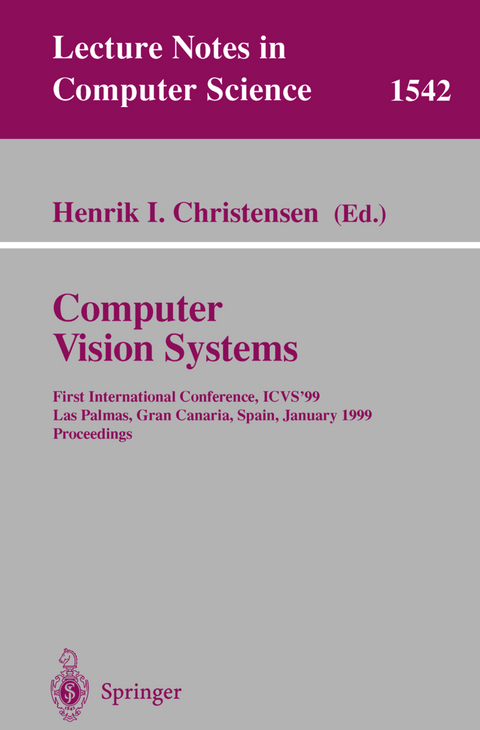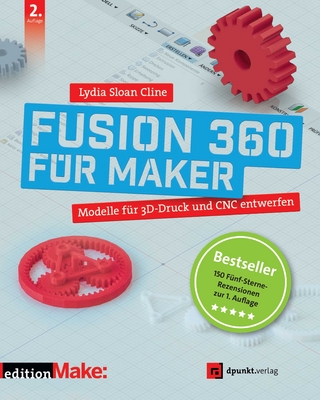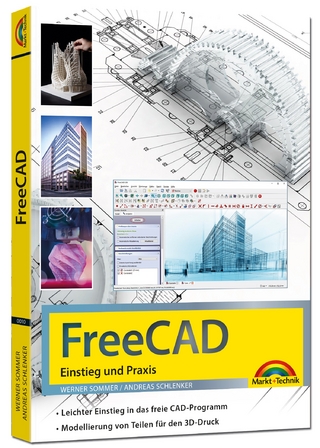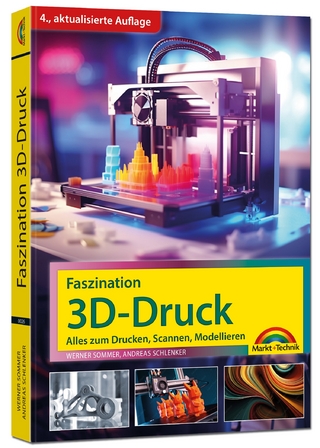
Computer Vision Systems
Springer Berlin (Verlag)
978-3-540-65459-9 (ISBN)
Vision for Navigation.- Integrating Vision Based Behaviours with an Autonomous Robot.- Topological Maps for Visual Navigation.- Vision-Aided Outdoor Navigation of an Autonomous Horticultural Vehicle.- Computer Vision Systems.- An Interactive Computer Vision System DyPERS: Dynamic Personal Enhanced Reality System.- Using Computer Vision to Control a Reactive Computer Graphics Character in a Theater Play.- Sassy: A Language and Optimizing Compiler for Image Processing on Reconfigurable Computing Systems.- Simulation and Scheduling of Real-Time Computer Vision Algorithms.- Visual Tracking.- Real-Time Maintenance of Figure-Ground Segmentation.- An Integrating Framework for Robust Real-Time 3D Object Tracking.- Face-Tracking and Coding for Video Compression.- Tracking People in a Railway Station during Rush-Hour.- Knowledge Based Methods/Systems.- Active Knowledge-Based Scene Analysis.- Experience in Integrating Image Processing Programs.- Integration of Vision and Decision-Making in an Autonomous Airborne Vehicle for Traffic Surveillance.- Multilevel Integration of Vision and Speech Understanding Using Bayesian Networks.- A Bayesian Computer Vision System for Modeling Human Interactions.- Action Reaction Learning: Automatic Visual Analysis and Synthesis of Interactive Behaviour.- A Generic Model for Perception-Action Systems. Analysis of a Knowledge-Based Prototype.- Architectures.- A Hierarchical Vision Architecture for Robotic Manipulation Tasks.- Optimal Image Processing Architecture for Active Vision Systems.- Reactive Computer Vision System with Reconfigurable Architecture.- MEPHISTO A Modular and Extensible Path Planning System Using Observation.- Active Vision.- DESEO: An Active Vision System for Detection Tracking and Recognition.- Playing Domino: A Case Study for an Active Vision System.- Improving 3D Active Visual Tracking.- Surveillance System Based on Detection and Tracking of Moving Objects Using CMOS Imagers.- 3-D Modelling.- 3-D Modelling and Robot Localization from Visual and Range Data in Natural Scenes.- Ascender II, a Visual Framework for 3D Reconstruction.- Hybrid Approach to the Construction of Triangulated 3D Models of Building Interiors.- On Camera Calibration for Scene Model Acquisition and Maintenance Using an Active Vision System.- Object Recognition.- ADORE: Adaptive Object Recognition.- Object Recognition for a Grasping Task by a Mobile Manipulator.
| Erscheint lt. Verlag | 18.12.1998 |
|---|---|
| Reihe/Serie | Lecture Notes in Computer Science |
| Zusatzinfo | XII, 560 p. |
| Verlagsort | Berlin |
| Sprache | englisch |
| Maße | 155 x 235 mm |
| Gewicht | 794 g |
| Themenwelt | Informatik ► Grafik / Design ► Digitale Bildverarbeitung |
| Mathematik / Informatik ► Informatik ► Software Entwicklung | |
| Informatik ► Theorie / Studium ► Künstliche Intelligenz / Robotik | |
| Schlagworte | 3D • algorithms • Architecture • autonom • autonomous robot • Cognition • Computer Graphics • computer vision • Hardcover, Softcover / Informatik, EDV/Informatik • HC/Informatik, EDV/Informatik • Image Processing • Modeling • Navigation • Object recognition • proving • robot • Simulation |
| ISBN-10 | 3-540-65459-3 / 3540654593 |
| ISBN-13 | 978-3-540-65459-9 / 9783540654599 |
| Zustand | Neuware |
| Haben Sie eine Frage zum Produkt? |
aus dem Bereich


